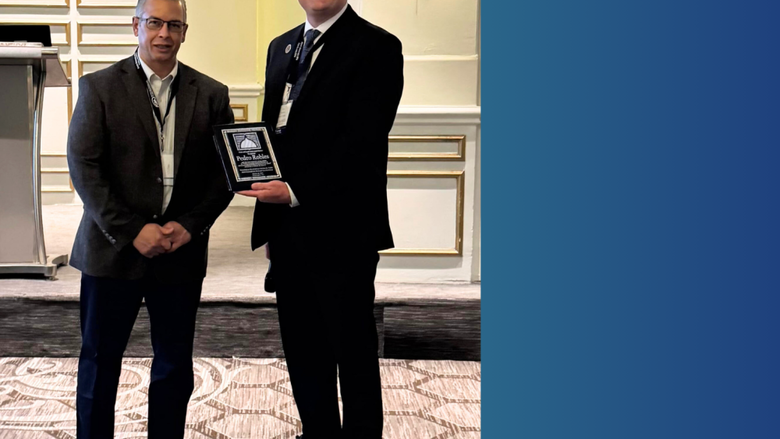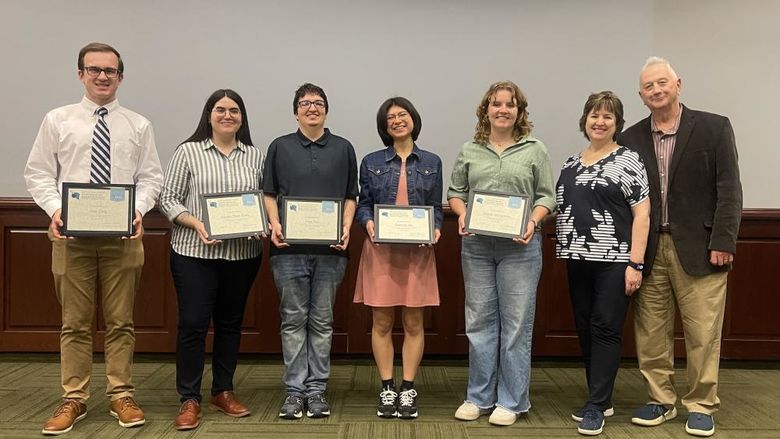
Catherine Suria, left, Penn State Harrisburg graduate student, and Nikhil Menon, assistant professor of civil engineering, are studying transportation accessibility.
MIDDLETOWN, Pa. — A student and a professor of civil engineering at Penn State Harrisburg are studying transportation accessibility, research they hope could help increase opportunities for individuals without cars.
“Transportation is a basic need that quietly yet powerfully defines the way we go about our days and lives,” said graduate student Catherine Suria. “It’s the preamble to almost every task we need to accomplish every day.”
Suria became interested in transportation and its importance as an undergraduate student at the Harrisburg campus. Through Penn State’s Multi-Campus Research Experience for Undergraduates program, Suria worked with Nikhil Menon, assistant professor of civil engineering, to examine how a bike share system in Middletown would impact transportation accessibility — the access to and ease of reaching one’s destination.
Suria used census and mapping data and identified potential bike share locations to determine how accessibility would change with the addition of such a program, compared with walkability. Results for Middletown were compared with Harrisburg.
Suria presented her case study at an Institute of Transportation Engineers (ITE) conference, where she connected with ITE researchers who asked her to contribute to their Zero Auto Ownership (ZAO) project. Her research was extended to add Pittsburgh as one of the locations studied, and to look at public transit options for estimating accessibility, as well.
Menon said accessibility research in transportation is focused on people’s ability to reach the destinations they need — for example, how many jobs, hospitals and grocery stores are within a certain radius of one’s home.
“We’re doing accessibility studies such as this to determine how policies should be drafted, in terms of prioritizing the needs of people that don’t have enough mobility/transportation options,” he said.
Owning a car puts someone’s accessibility on the high side, he said, but people without access to a car must rely on other options — public transit, walking, or bicycling. For some others, not owning a car might be an environmental choice.
Suria noted that it might seem like public transit would increase the accessibility score, but that is not always the case — it depends on the routes and availability of bus stops, for example. The availability of infrastructure such as sidewalks and bike lanes impacted accessibility scores a lot, too. If a neighborhood was disconnected from the next area by a bridge, for example, that increased the time of travel.
“It kind of showed a little bit how the layout of sidewalks and bike lanes and streets does have a big impact,” she said. “Proper design and exit and entry into neighborhoods are important.”
Menon added that transportation planning needs to move from a mobility-based framework to one focused on accessibility.
“Accessibility is what we need to prioritize and that’s how we want to plan for the future,” he said. “So, studies like this form a nice benchmark from which you can measure how these accessibility-based planning measures are being implemented.”
Menon and Suria will be contributing authors to the ITE report, and Suria is also working on a report on her work that can be shared with the public.
Suria said the experience of working with ITE has been exciting and helped her engage with professionals and learn more about research being done in the field.
Menon, who has been a member of ITE since he was a student himself, said he tries to encourage students to engage with the organization since it provides access to many resources and opportunities.
“I think that’s what, as faculty members, we need to do to expose students to the world outside of the classroom, so they understand the practical implications of what we learn in class and how it is implemented in the real world through projects. And getting involved in ITE activities is a great way to do that,” he said.





